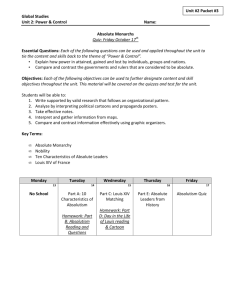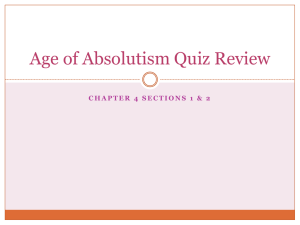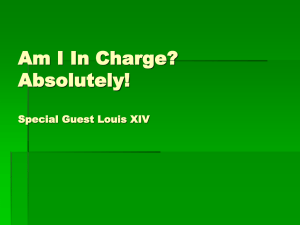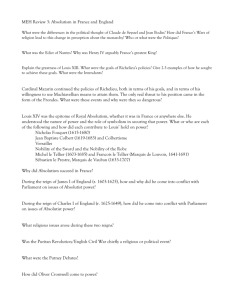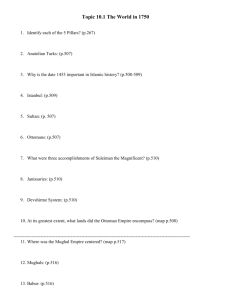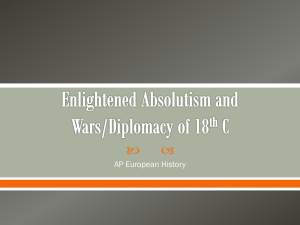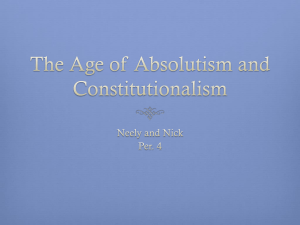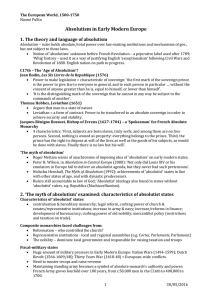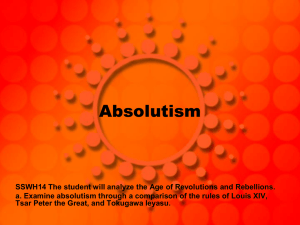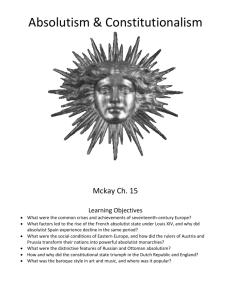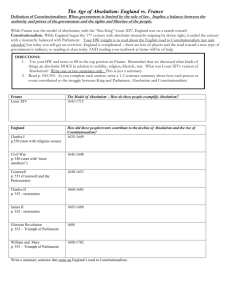FRQ Practice
advertisement
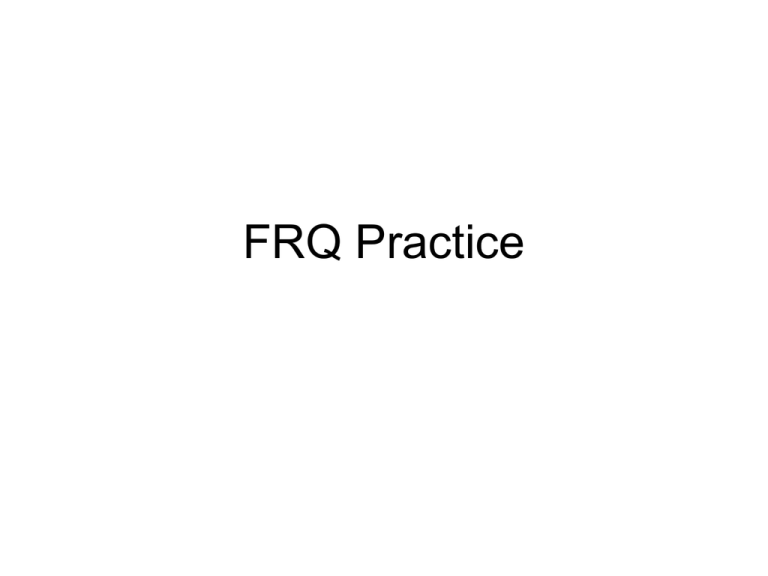
FRQ Practice Compare and contrast two theories of government introduced in the period from 1640 to 1780. • • • • Enlightened absolutism Hobbes Voltaire Human nature: conflict, selfish, greedy • Power to masses=anarchy • Social contract • Gov serves people • • • • • • • • • • Constitutional democracy Locke Montesquieu Rousseau Human nature: good, can be trusted to make good decisions Fear of tyranny Right to overthrow gov Social contract Separation of powers, natural rights, freedom Equality under law Grouping Body 1 – social contract (compare) Body 2 – human rights (compare) Body 3 – human nature; type of gov (contrast) Thesis - Basic • Two theories of government developed around an enlightened absolutism and constitutional democracy, each supporting the ideas of the social contract and human rights. Thesis - Advanced • According to Enlightenment theories, the best relationship between government and citizens was embedded in the social contract and philosophers of the period acknowledged certain human rights and freedoms that should be protected by the government. However, philosophers disagreed on whether an absolutist regime or a constitutional democracy would accomplish these enlightened reforms most effectively. Louis XIV declared his goal was “one king, one law, one faith.” Analyze the methods the king used to achieve this objective and discuss the extent to which he was successful. Evidence • • • • • • “I am the State” Divine right Fronde Corvee Intendant system Chief ministers – middle class • Resistance – prison, execution, conscription • • • • • • • Palace of Versailles Edict of Fontainebleau Head of Gallican Church Created massive army Wars of expansion Persecuted Jansenists Gov regulation of monopolies and trading companies • Merchant Marine Groups 1. King - Weakened nobility 2. Law - Strong military 3. Faith - Persecuted non-Catholics Or 1. Political 2. Economic 3. Religious Thesis - Basic • Louis XIV accomplished “one king, one law, and one faith” by using methods of repressing the nobility, restoring Catholic dominance, and building a strong military. Thesis - Advanced • Louis XIV developed a strong absolutist state of “one king, one law, and one faith” by using methods of repressing the political threat of nobility and restoring Catholic homogony. He furthermore enforced domestic control and limited foreign expansion through a strong military.
